The words “full moon” in many languages

It is said that there are more than 6,000 languages worldwide (this is hard to imagine) and it is a fascinating concept to think, there are probably as many words for “full moon”.
Here we begin our little journey to the full moon. A few words about the fascinating quest of the greater purpose, that includes the full moon circulating through our lives. In layman’s terms and not always scientific (astronomy experts – don’t look too closely!). We would like to wish you illuminating moments. Enjoy!


It is said that there are more than 6,000 languages worldwide (this is hard to imagine) and it is a fascinating concept to think, there are probably as many words for “full moon”.
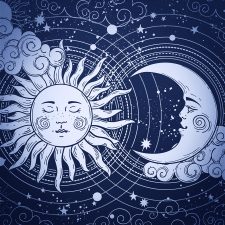
A full moon is when the Sun and the Moon are facing opposite, being in opposite direction from an Earth perspective.
This might feel astonishing if one imagines that the Moon is on one side, the Sun on the other and the Earth in between? Shouldn’t the Earth throw a shadow onto the Moon? Bingo – this is exactly what she does! But only when the Moon is exactly on the Earth orbit, the so called “ecliptic”. When this takes place, we speak of a lunar eclipse!

The Moon needs 27.33 days to circle around the Earth. Something that is also referred to as “sidereal time”. But because the Earth orbits the Sun, just like the Moon orbits the Earth, the Moon has to travel two further days in order to resume the same position to the Earth and Sun. This is then called the “sidereal time”. In order to determine the point of time of the reoccurring full moon, the sidereal time serves as basis.

We already know now that the moon month is mostly shorter than the calendar month, being on average approximately 29.5 days. If full moon falls on the first or second of a month, it is possible that another full moon occurs in the same month, for instance in July 2004:
Friday, 2 July 2004, 01:08:54 pm
Saturday, 31 July 2004, 08:05:06 pm
This event is also known as “blue moon”.

The answer is: “everywhere at the same time”. This refers to the so called Universal Time (UT) though, which is used for general astronomical events. We have already learnt that full moon is an astronomical event, where the moon, sun and the earth play a role by being in a specific position. So, full moon takes place at a specific time in the outer space. This point of time is specified by astronomers namely by the Universal Time.

There are multiple ways of approaching this question. If we look at it from a purely theoretical standpoint, we might be tempted to say that the full moon is infinitely short, since the phases of the moon are changing continuously. The moon is not yet quite full shortly before the full moon, and is already waning shortly afterwards.
However, there is a practical aspect that lets us quantify the full moon as a finite and measurable span of time: Since the Sun is significantly bigger than the Moon, its rays are able to reach just a little over half of the Moon’s surface. This means that the timespan in which the visible side of the Moon’s surface is irradiated (as seen from Earth) is longer than infinitely short.

Whether scientists, astrologers or esoterics, they agree on one thing: the moon influences earth and life on earth. For instance, it regulates the tides through its magnetism. Also continents feel the consequence of this magnetism and either raise or lower their position sometimes up to 26 cm.

In nature it is a known fact: for some animal species, mating takes place at full moon. However, the examples that can be found on this subject are rather simple. Full moon serves in some cases indirectly as the cause (for instance through the high water levels during the tides that the horseshoe crab uses to deposit its eggs) or also as the signal for both sexes of a species to begin at the exact same time to safeguard their future existence (a particular type of fly or also corals). It is understood that also wolves are led by full moon when it is time to mate.

… that people are looking for an argument at full moon or are especially happy …
… that if full moon is surrounded by a haze, a person dies …
… that you raise your hat three times to the moon (being a man) or you make a curtsey (being a woman), in order to protect yourself from misfortune until the next full moon …
… that whoever does not chink glasses with full moon at least once, does not deserve any happiness [Greek toast] …
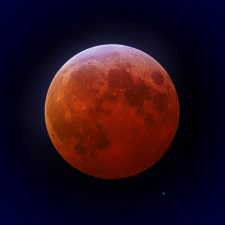
During a lunar eclipse, the Moon moves through the shadow of the Earth. Which means, that the Earth is positioned quite exactly between the Sun and Moon and casts its shadow onto the Moon. This is only possible at full moon and if some other requirements are met. Depending on whether the moon passes the partial or the core shadow of the Earth, we speak of a partial or total lunar eclipse.
The American film studio DreamWorks SKG was founded by movie director Steven Spielberg, Disney head of animation Jeffrey Katzenberg and music producer David Geffen, in 1994 (the initials of the founders create the “SKG” in the company’s name). The opening credits of its movies, DreamWorks shows a boy, who sits on the waxing crescent moon while fishing and being surrounded by impressive cloud formations.
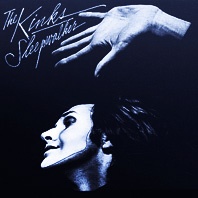
In 1977 the English music group The Kinks, released their album »Sleepwalker«, with which they returned to the more rocky sounds of the 60s after a more conceptual and overtexted phase, and thus were at least able to resume their previous success.
The Kinks are considered to be one of the most important British rock bands of this time, next to The Beatles, Rolling Stones and The Who.

We had already told you about the paintings of romanticism by German painters Caspar David Friedrich (1774–1840) and Philipp Otto Runge (1777–1810). And also the English painter William Turner (1775–1851) had the moonlight in his mind. Here we are looking at the next generation and find the Dutch-Belgian artist Petrus van Schendel (1806–1870), whose speciality were the nightly moonlight sceneries. What distinguished him from his predecessors and colleagues, was that it were precisely those depictions of nightlight, which brought him fame and not an insignificant financial success (which was not a given for many painters).
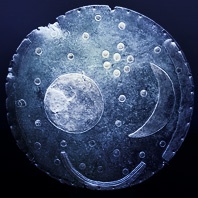
This disk, made of bronze and gold, with an age of around 3,600 years, belongs to the oldest find representing astronomical phenomena and thereby depicting planets and stars in the sky. It is thus of great value, because it is evidenced that people of the Bronze Age (2200-800 BC) did not only possess manual skills to create such a refined metal disk, but above all, had the knowledge about astronomical processes. They observed the celestial events with the naked eye and portrayed this in an artistic form.

Today is the last day of 2012 and we asked ourselves when there has been or will be a full moon in the past or the future at the turn of the year. What a fascinating picture, if you are imagining also the full moon next to the firework welcoming the New Year. The spectacle of humans meets the eternal beauty of the universe …
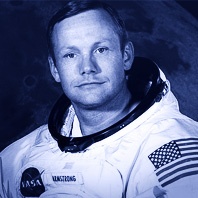
Neil Alden Armstrong (1930–2012) was a US American astronaut, who was the first man to set foot on the Moon as the commander of the Apollo 11 mission on 21st July 1969, and hence the first to step on a foreign celestial body. The mission was preceded by a fierce competition about the »reign« of space, between the then super powers USA and Soviet Union, so that the success of Apollo 11 turned out to not only have a historical meaning but also had a political relevance.
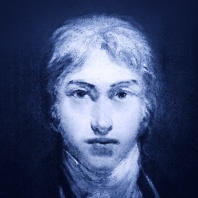 Photography had not yet been invented when the British painter J. M. William Turner (1775–1851) created his painting »Fishermen at Sea« in 1796, where he depicts a nightly scenery at a tempestuous sea, which is lit by the full moon midst heavy clouds. This painting was the first exhibited oil painting by the then 21 year-old Turner and marked the beginning of a great career.
Photography had not yet been invented when the British painter J. M. William Turner (1775–1851) created his painting »Fishermen at Sea« in 1796, where he depicts a nightly scenery at a tempestuous sea, which is lit by the full moon midst heavy clouds. This painting was the first exhibited oil painting by the then 21 year-old Turner and marked the beginning of a great career.

When observing the Moon, you can see dark spots on its surface. In the old days, these were thought to be the seas and oceans just like on Earth, so they were called »mare« (plural: »maria«). Giovanni Riccioli (1598–1671), an Italian priest and astronomer was leading in this area and was responsible for giving many lunar maria their Latin or partially poetic names. We would like to single out a few that we consider to be worthwhile mentioning.
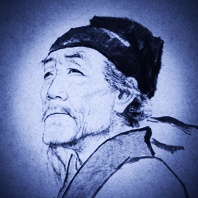
Matching to the moon festival, which has just been celebrated in Asia, we are looking to the Far East and are going far back in time to the year 700 A.D. Back then, the Tang Dynasty ruled China, a powerful dynasty that remained in power for almost 300 years. And there were two poets whose names are still well-known today, Li Bai (701–762) and Du Fu (712–770; see fictitious portrait opposite). Both created magnificent works. Li Bai was already a little older and hence a few years ahead, Du Fu had apparently surpassed his idol – this is what is being said amongst scholars.

»Moon blindness« (lat. morbus lunaticus) has nothing to do with the moonlight and luckily does not afflict humans. It is a disease of the eyes of horses, which recurs periodically. Due to an inflammation of the iris, which is caused by bacteria from food that has been contaminated by mice and rats, the cornea of the eye can cloud over. This leaves a bluish color, which gave the illness its name (even though the moonlight is not blue). If this inflammation continues to happen in an interval of months, it is possible that over the years it can lead to complete blindness of the animal. There is the option of an eye operation in the early stage of the illness, however, this is not straightforward.